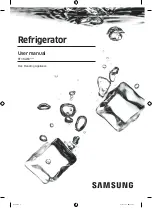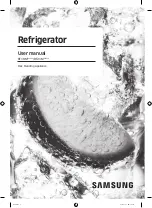
51
EN
4 Food storage
4.1 Refrigerator compartment
For normal operating conditions, set
the temperature of the refrigerator com-
partment to +4 or +6 °C.
• To reduce humidity and avoid the
consequent formation of frost, always
store liquids in sealed containers in
the refrigerator. Frost tends to con-
centrate in the coldest parts of the
evaporating liquid and, in time, your
appliance will require more frequent
defrosting.
• Never place warm food in the refrige-
rator. Warm food should be allowed
to cool at room temperature and
should be arranged to ensure ade-
quate air circulation in the refrigerator
compartment.
• Make sure no items are in direct con-
tact with the rear wall of the applian-
ce as frost will develop and packa-
ging will stick to it. Do not open the
refrigerator door frequently.
• We recommend that meat and clean
fish are loosely wrapped and stored
on the glass shelf just above the vege-
table bin where the air is cooler, as
this provides the best storage condi-
tions.
• Store loose fruit and vegetable items
in the suitable containers of the
fruit
and vegetable drawer.
• Store loose fruit and vegetable items
in the suitable
fruit and vegetable
drawer.
• Storing fruit and vegetables separa-
tely helps prevent ethylene-sensitive
vegetables (green leaves, broccoli,
carrot, etc.) being affected by ethy-
lenereleaser fruits (banana, peach,
apricot, fig etc.).
• Do not put wet vegetables into the
refrigerator.
• Storage time for all food products
depends on the initial quality of the
food and an uninterrupted refrigera-
tion cycle before refrigerator storage.
• To avoid cross-contamination do not
store meat products with fruit and
vegetables. Water leaking from meat
may contaminate other products in
the refrigerator. You should package
meat products and clean any leaka-
ges on the shelves.
• Do not put food in front of the air flow
passage.
• Consume packaged foods before the
recommended expiry date.
Use
















































